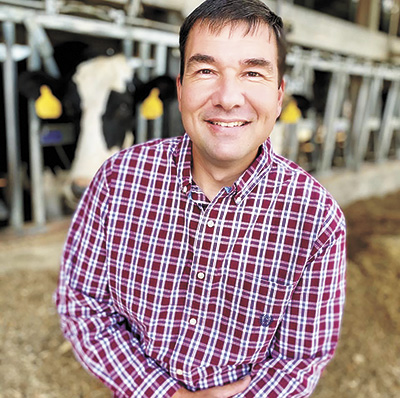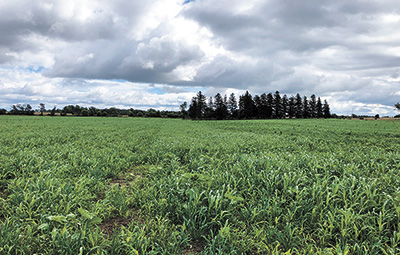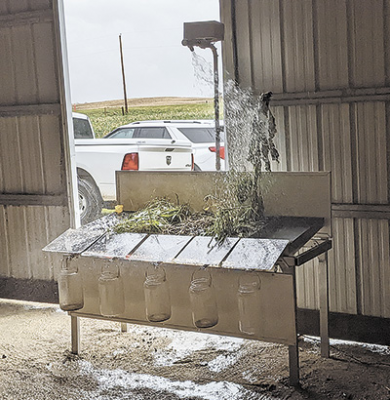The Pollack family is devoted to conservation practices like no-till farming, cover crops, and planting green. Each year, they increase the number of acres utilizing these practices. In 2022, their mission was to expand their use of cover crops and plant options suitable for grazing.
Pollack-Vu Dairy and Steer Farm near Ripon, Wisconsin held a field day October 12, inviting others to see the progress of their cover crops designed for grazing. Challenged with an inadequate amount of pasture for their expanding beef herd, the Pollacks planted a multi-species cover crop mix after canning peas and interseeded cover crops into corn with plans to use both fields for grazing cattle.
Rain fell persistently throughout the field day event hosted by the Upper Fox-Wolf Demonstration Farm Network, preventing those in attendance from getting into the fields. As a result, Derrick Raspor, a resource conservationist at the Natural Resources Conservation Service, brought the field inside. He highlighted samples of each plant within the nine-species, warm-season cover crop mix.
Raspor also ran a rainfall simulator during the event to demonstrate how rain affects four management types. The side-by-side comparison of similar silt loam soils included conventional tillage, unmanaged perennial cool season grass, no-till soybeans after harvest, and Pollacks’ living cover crop mix.
After running about an inch of water that mimicked a steady rain, it was clear which management type suffered the most runoff as sediment collected in the jars beneath each sample tray. Conventional tillage had the highest amount of runoff, followed by the soybeans. Third was Pollacks’ cover crop while the perennial grass experienced zero runoff; its jar was empty. The simulator proved to be an eye-opening experiment illustrating the effectiveness of a cover crop in preventing runoff.
“We’re trying to build a resilient system that can take a little punishment and bounce back,” Raspor said. “Through Chris’ cover crops, no till and grazing practices, he is working toward that type of system.”
Funded through the GLRI, Demonstration Farm Networks demonstrate the best, leading-edge conservation practices to reduce phosphorus and sediment from entering the Great Lakes.




